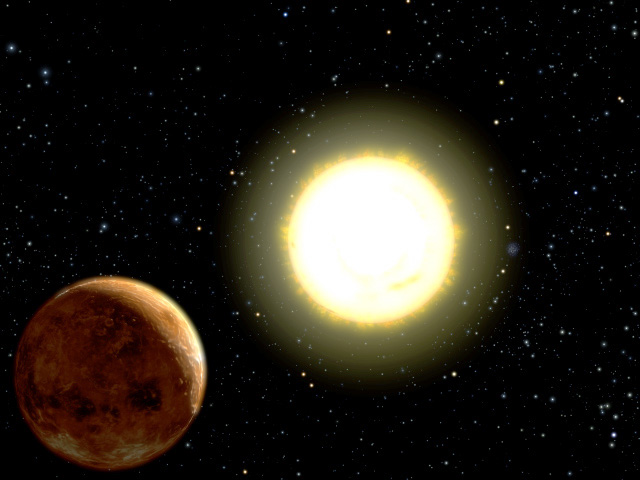An Inner Neptune for 55 Cancri

Explanation:
Is
our Solar System unique?
The discovery of a
Neptune-mass planet in an sub-Mercury orbit around nearby
Sun-like star
55 Cancri,
announced yesterday along with the discovery of other similar systems, gives
a new indication that
planetary systems as complex as our own
Solar System
likely exist elsewhere.
The planet,
discovered in data from the
Hobby-Eberly telescope in Texas, the
Lick Observatory
in California, and the orbiting
Hubble Space Telescope,
is one of four planets now known to orbit
55 Cancri
-- the others being similar in mass to Jupiter.
The finding involved noting
subtle changes in the speed of the star caused by its orbiting planets.
The
above drawing depicts what this planet might look like,
assuming a mass similar to
Neptune, but a
composition similar to Earth.
The star
55 Cancri, only 40 light-years distant, is
visible with
binoculars towards the
constellation of
Cancer.
Authors & editors:
Robert Nemiroff
(MTU) &
Jerry Bonnell
(USRA)
NASA Web Site Statements, Warnings,
and Disclaimers
NASA Official: Jay Norris.
Specific
rights apply.
A service of:
LHEA at
NASA /
GSFC
& Michigan Tech. U.

